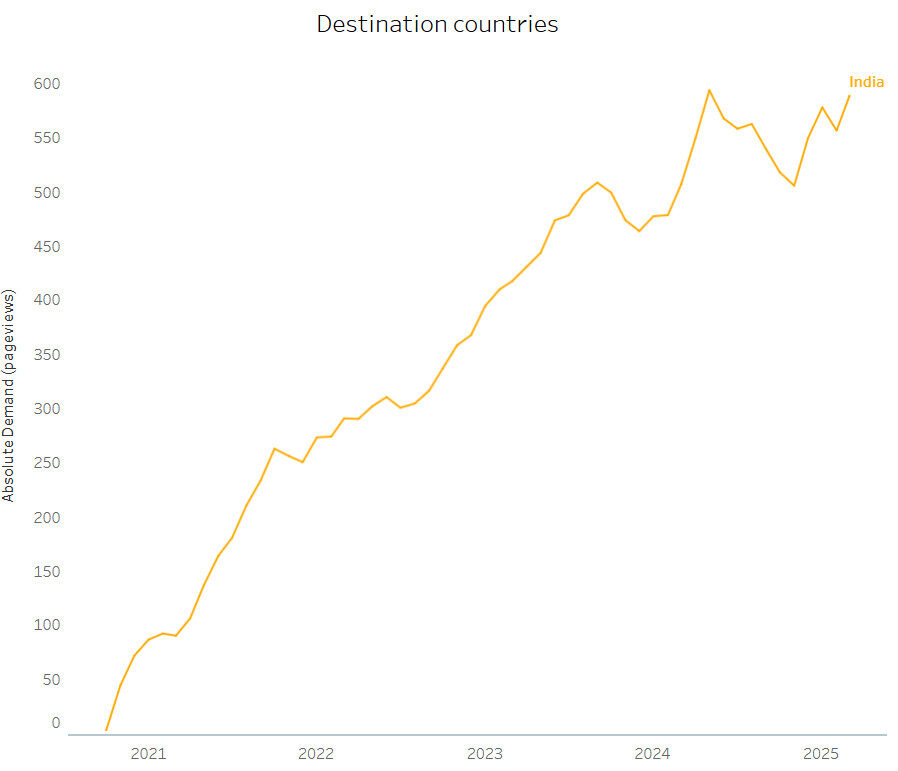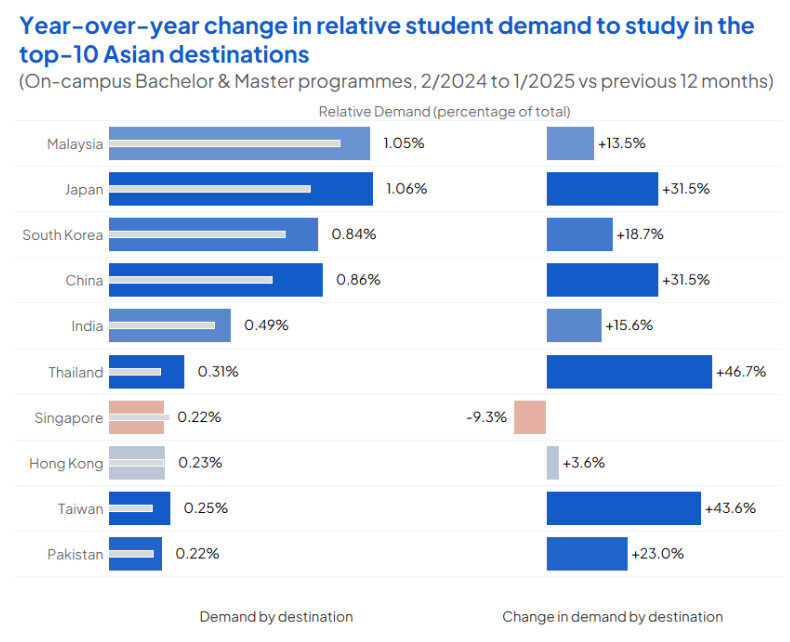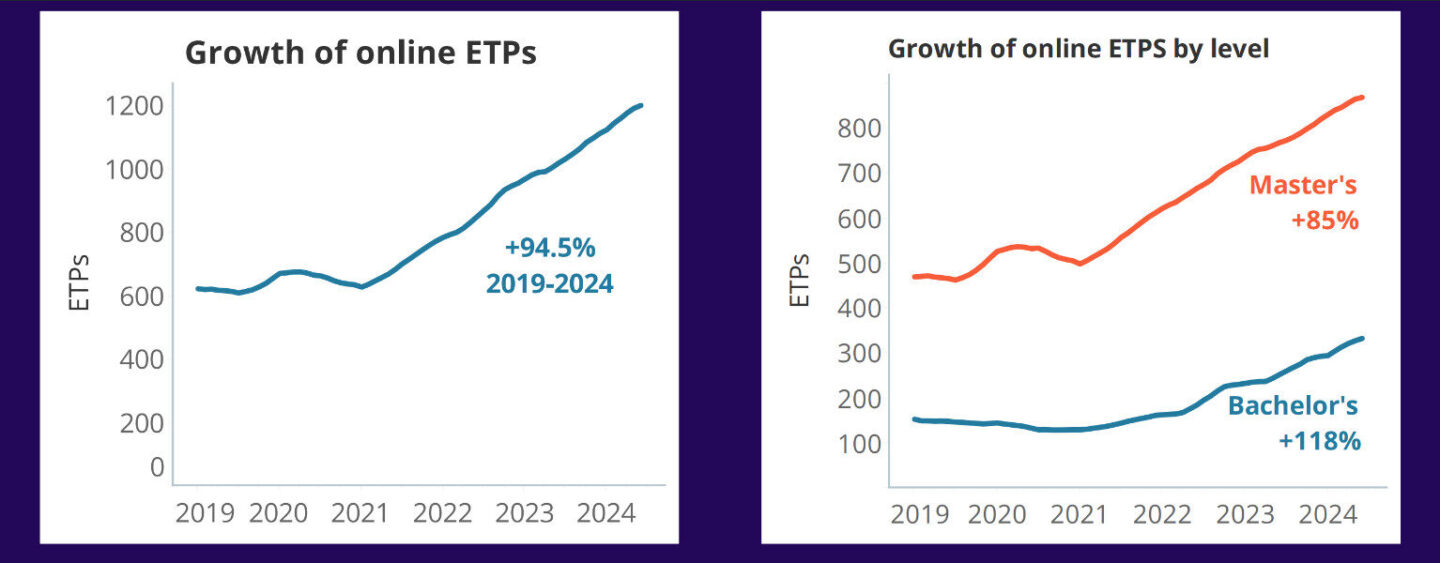India's online revolution in higher education

India is known as a source market of international students going to universities across the globe. But recently, the tables have turned; India is emerging as a significant provider of both on-campus and online learning opportunities, even attracting students from traditional powerhouses like Canada and the US.
Online degrees in India: Demand growth outpaces on-campus programmes
Specifically, the global share of international students showing interest in online courses in India has grown by almost 60% over the past year. This surge in online interest significantly outpaces the interest in physically studying in India, for which the relative demand has remained almost stagnant.

‘We have students—working professionals—who probably cannot come to India due to various reasons,’ explains Mudhita Nagpal, Deputy Manager at the Office of Digital Learning and Online Education at O.P. Jindal Global University (JGU). JGU is a leading private university in India, known for its focus on interdisciplinary education, global collaborations, and expanding access to higher learning through online programmes. ‘Having these online courses gives them access to quality education at a minimal cost, because our programmes are comparatively affordable while our education is at par with the leading universities in the world.’ This highlights a fundamental shift in global higher education: digital accessibility is leveling the playing field for atypical destinations.
Students studying online courses at JGU are from all over the world, with the highest international student enrolments from the US, Canada, Germany, and the African continent.

This growth in demand also outperforms traditional destinations like the UK and Canada, whose relative demand for online courses has been slowly dropping.
This may be largely due to the accessibility of online courses, especially for those facing barriers in traditional destinations. Aside from the financial aspect, many students struggle with visa limitations and restrictive policies in countries like Canada—an obstacle that online education bypasses. With students joining from every continent and diverse backgrounds, JGU’s international enrolment is a strong testament to the global reach of online learning in non-traditional destinations.
‘Our vision is to empower people with education by bridging the barriers and taking it truly global. So of course, online education helps us immensely,’ concludes the JGU representative, emphasizing digital learning as crucial for India’s evolving position in global education.
The Asian decade in higher education: Key growth areas beyond India
This phenomenon extends beyond India. For generations, pursuing a prestigious degree often meant universities in the Big Four: the UK, US, Australia, and Canada. But through the internet, and perhaps with the pandemic as a catalyst, new destinations are capturing their attention. Particularly Asian countries, with many referring to the “Asian decade” in Higher Education.

This is unsurprising; many Asian universities are characterised by high-quality education and affordability. Pair this with a growing supply of English-taught programs, cultural appeal, promising post-graduation opportunities, and the expansion of Asia’s economic influence, and it’s easy to understand why Asia is becoming more attractive to international students. This continues to reshape global student mobility patterns.
There are more online programmes than ever—especially outside the Big Four
This growing appeal of Asia as a study destination is amplified by the increasing availability of online programs from Asian universities. Recent research conducted by the British Council IELTs and Studyportals shows a shift to more online offerings by universities outside the Big Four. As of 2024, Studyportals has identified over 40,000 English-taught programmes outside the Big Four universities. Of these, a significant and growing portion—over 1200—are fully online, which is nearly double the number compared to 2019.

And with online courses, studying at Asian universities is more accessible than ever, with India’s burgeoning online education sector as a prime example.
In short: the key takeaway is expanded access
While privilege and geography have historically limited access to quality higher education, India and other Asian nations are changing this through online learning and innovative programmes. This shift empowers a new generation of diverse, ambitious global learners to shape the world. The challenge now is to sustain and accelerate this progress, ensuring equitable access for everyone.


